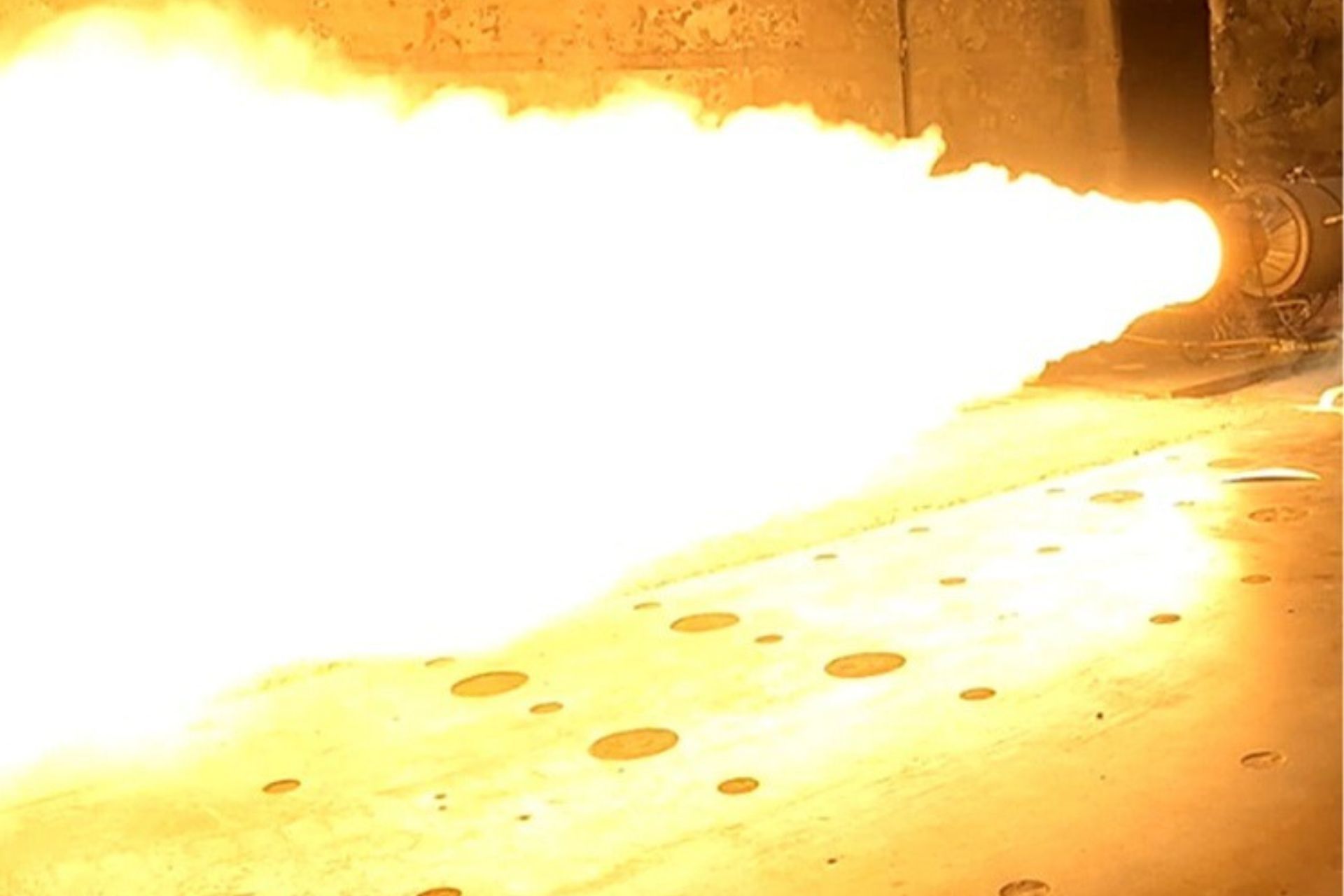Breaking News
Raytheon and Northrop Grumman Test New Long-Range Solid Rocket Motor.
Two leading American defense companies, Raytheon, a subsidiary of RTX, and Northrop Grumman, have recently successfully tested a new long-range solid rocket motor (SRM), according to a statement issued on September 12, 2024. The test, conducted as a static fire, took place at the Northrop Grumman Allegany Ballistics Laboratory in West Virginia. This step validated the concept and provided data to support digital models and simulations, confirming the SRM's maturity and performance.
Follow Army Recognition on Google News at this link

Hypersonic refers to aerial objects, such as aircraft, missiles, rockets, or spacecraft, that can exceed Mach 5, a speed of nearly 4,000 miles per hour (6,437 km/h) (Picture source: RTX)
The test demonstrated controlled end-burning technology, suitable for hypersonic applications. Both companies emphasized the importance of this milestone in proving the capability of the new rocket motor. Colin Whelan, president of Advanced Technology at Raytheon, stated that industry collaboration had made it possible to demonstrate the feasibility of producing and meeting the requirements for long-range fires.
Raytheon and Northrop Grumman have a long history of collaboration in the development of hypersonic systems. Both companies are actively investing in rocket motor testing to ensure the stability and maturity of their designs, which is necessary to deliver this capability on an accelerated timeline.
Hypersonic refers to aerial objects, such as aircraft, missiles, rockets, or spacecraft, that can exceed Mach 5, a speed of nearly 4,000 miles per hour (6,437 km/h). The Mach number indicates how many times the object's speed surpasses that of sound. The United States, Russia, and China are currently testing hypersonic technologies, raising concerns about a global arms race and the potential obsolescence of current defense systems. Although some "hypersonic" weapons are deployable today, their actual applicability remains a topic of debate.
In the context of the Ukraine conflict, Russian forces have used their own hypersonic missiles, such as the Kinzhal. This missile exists in both cruise missile and air-launched ballistic missile forms. Both versions have been used in some of the heaviest strikes conducted by Russian forces against Ukraine.
According to Frank DeMauro, vice president of Weapon Systems at Northrop Grumman, this end-burning rocket motor test is significant because it offers extended range compared to conventional rocket motors. The collaboration between Raytheon and Northrop Grumman comes at a time when discussions about long-range missiles continue to dominate global debates, particularly as Ukraine seeks Western nations' approval to use such missiles against Russian military installations deep inside Russian territory.
Ukrainian President Volodymyr Zelensky recently emphasized that lifting restrictions on the use of long-range weapons could be decisive in the conflict. "If we are allowed to use these weapons, we should be able to employ them as needed to strike military targets," he stated. He further added that removing restrictions without providing the necessary missiles would avoid making a real decision on using these specific weapons.
Due to these constraints, Ukrainian forces have had to compensate for their lack of deep-strike capability by carrying out an incursion into Russia's Kursk region. This situation highlights the importance of long-range weapons in modern warfare and the challenges surrounding their use and deployment.


























